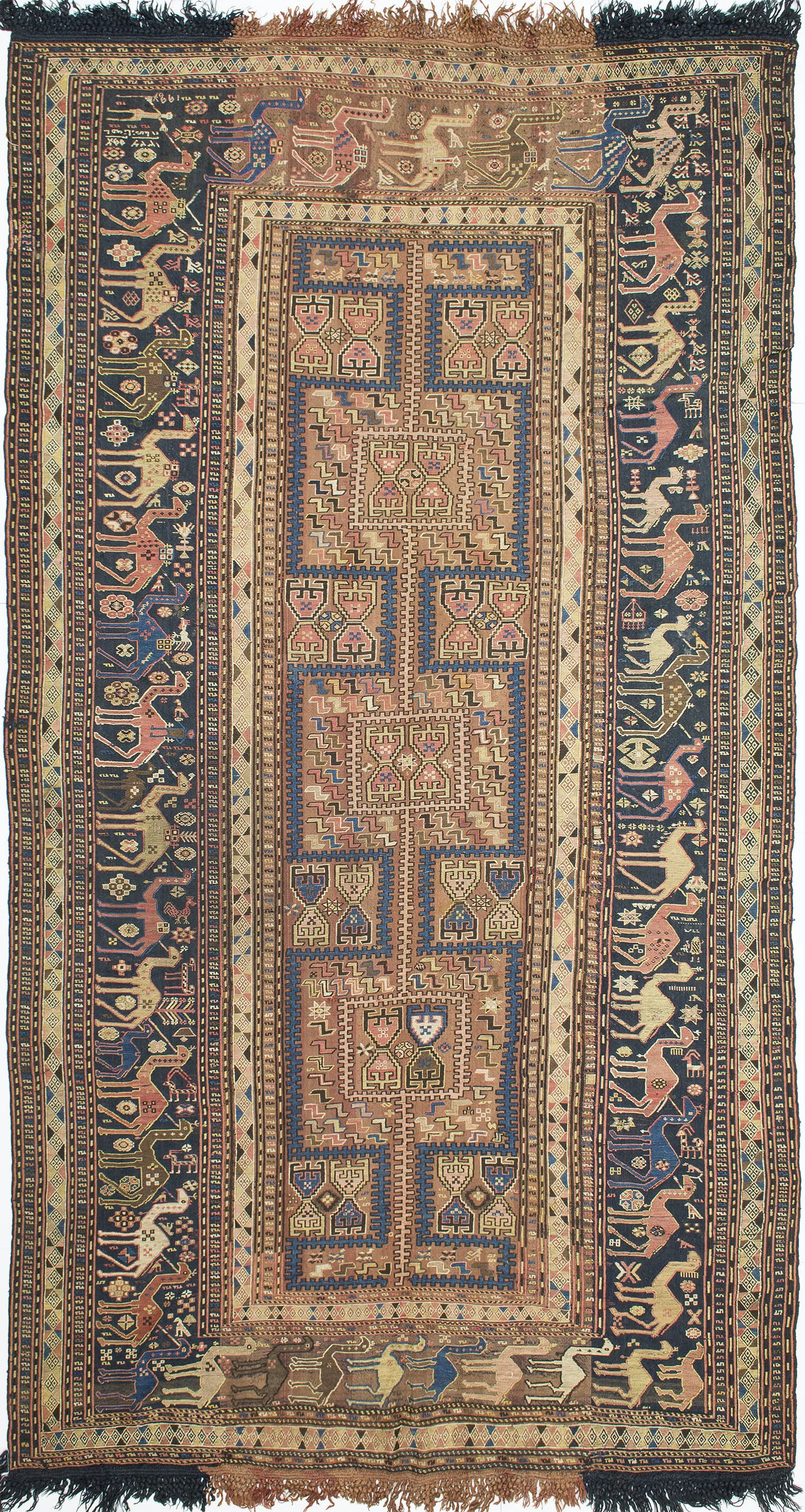Camel Verneh “Shadda” Rug
Reference Number: 16190
Size: 10 ft 9 in x 5 ft 10 in
Origin: Southwest Caucasus
Woven: Dated 1906
Description: The Caucasus is the geographically-isolated mountainous region north of Persia between the Black and Caspian Seas. The diverse population of this area primarily consists of Armenians and Azeri Turks; however large groups of Georgians and Kurds also inhabit and produce rugs in this territory. The designs illustrated in these weavings are sparsely decorated with large-scale patterns of stylized flora appearing as abstract geometric elements. The impact of these designs is heightened by the usage of a limited number of contrasting primary colors.
Verneh rugs are woven using a technique known as weft-float brocading, which means that the wefts that form the pattern are supplementary to the plain weave that forms the ground. The grounds of “Shaddas” are usually made with blue warps and wefts in the side borders, with the centers or fields being of a lighter coloration, in this example light brown or mocha. The term “Shadda” is a name for a weaving technique, loosely translated in Turkish and Arabic as “to intensify or strengthen”, no doubt referring to the warp and weft-sharing technique used in the grounds of these weavings. For a more thorough discussion on this type of rug see The Caucasus: Traditions in Weaving by James D. Burns.
Please Provide email for Request:

